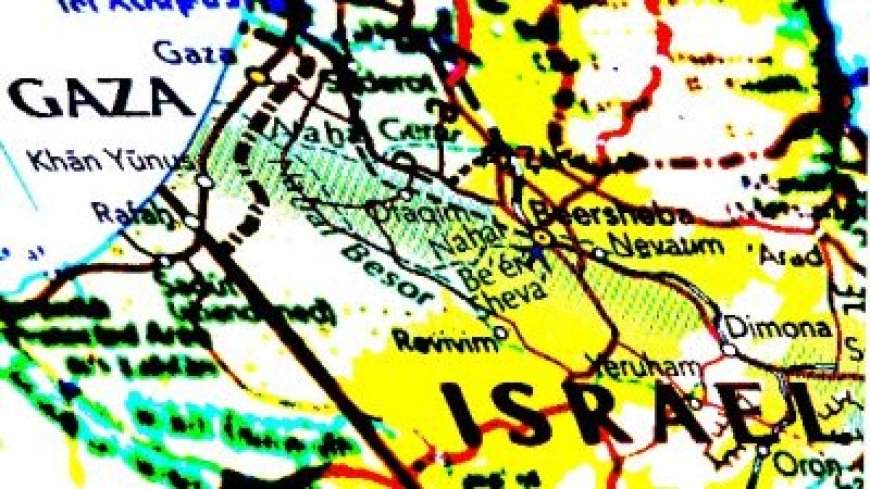Crimes against humanity running rampant in Gaza: Any end in sight?
Crimes against humanity running rampant in Gaza: Any end in sight? Augusta Free Press

Sustainable Development Goals (SDGs) and the Humanitarian Crisis in Gaza


Introduction
The ongoing conflict in Gaza has resulted in a severe humanitarian crisis, with significant implications for the achievement of the Sustainable Development Goals (SDGs). This report highlights the critical issues of starvation and the vulnerability of aid workers in Gaza, emphasizing the urgent need for international action to address these challenges.
Starvation
The Integrated Food Security Phase Classification (IPC) has conducted a comprehensive analysis of the food situation in Gaza, revealing alarming findings. Currently, half of Gaza’s population, approximately 1.1 million people, face “catastrophic food insecurity.” Without a ceasefire agreement, it is projected that the entire population will be in this condition by July. The report warns that famine is imminent in the northern governorates and could occur between mid-March and May 2024.
The delivery of food and basic necessities has been severely disrupted, exacerbating the famine. The number of trucks entering Gaza has significantly decreased, resulting in households skipping meals and adults reducing their food intake to ensure children can eat. In the northern governorates, nearly two-thirds of households have gone without food for entire days and nights at least ten times in the last 30 days. In the southern governorates, this applies to one-third of households.
It is crucial to recognize that Gaza was already facing dire socio-economic conditions before the conflict. In 2022, the unemployment rate was nearly 45%, and the poverty rate reached 60%. Over half of the population relied on humanitarian assistance as their main income source, and 70% of the population was food insecure.
The Vulnerability of Aid Workers
In addition to the food insecurity crisis, aid workers in Gaza face perilous conditions. The recent tragic incident involving the death of seven members of the World Central Kitchen highlights the dangers faced by humanitarian relief workers. Prior to this attack, 196 aid workers had already been killed between October and March, a shocking figure considering that no aid workers had been killed in the Occupied Territories in the previous three years.
There are concerns that relief organizations are being deliberately targeted, as Israeli forces have reportedly targeted healthcare facilities, aid convoys, and ambulances. Despite sharing GPS coordinates with Israeli authorities to avoid unintentional bombing, aid facilities continue to be hit. This disregard for the norms of modern warfare raises serious questions about the protection of aid workers and the humanitarian response in Gaza.
Furthermore, Israel has established a separate, privately contracted aid system to bypass reliance on the UN’s relief organization and NGOs. This development further complicates the humanitarian situation in Gaza.
Conclusion
The humanitarian crisis in Gaza demands immediate attention and action. The Sustainable Development Goals (SDGs) provide a framework for addressing the underlying causes of this crisis and achieving lasting peace and prosperity for all. It is crucial for the international community to prioritize the SDGs and work towards ending the starvation and protecting aid workers in Gaza.
Mel Gurtov, syndicated by PeaceVoice<
SDGs, Targets, and Indicators
SDGs:
- SDG 2: Zero Hunger
- SDG 3: Good Health and Well-being
- SDG 16: Peace, Justice, and Strong Institutions
Targets:
- Target 2.1: By 2030, end hunger and ensure access by all people, in particular the poor and people in vulnerable situations, including infants, to safe, nutritious, and sufficient food all year round
- Target 3.8: Achieve universal health coverage, including financial risk protection, access to quality essential health-care services, and access to safe, effective, quality, and affordable essential medicines and vaccines for all
- Target 16.1: Significantly reduce all forms of violence and related death rates everywhere
Indicators:
- Indicator 2.1.1: Prevalence of undernourishment
- Indicator 2.1.2: Prevalence of moderate or severe food insecurity in the population, based on the Food Insecurity Experience Scale (FIES)
- Indicator 3.8.1: Coverage of essential health services (defined as the average coverage of essential services based on tracer interventions that include reproductive, maternal, newborn and child health, infectious diseases, non-communicable diseases, and service capacity and access)
- Indicator 16.1.1: Number of victims of intentional homicide per 100,000 population, by sex and age
Analysis:
1. Which SDGs are addressed or connected to the issues highlighted in the article?
The issues highlighted in the article are connected to the following SDGs:
- SDG 2: Zero Hunger – The article discusses the catastrophic food insecurity and famine in Gaza, which is directly related to the goal of ending hunger.
- SDG 3: Good Health and Well-being – The article mentions the perilous conditions for humanitarian relief workers and the deaths of aid workers, highlighting the importance of ensuring good health and well-being for all.
- SDG 16: Peace, Justice, and Strong Institutions – The article discusses the violence and attacks on aid workers in Gaza, which is relevant to the goal of reducing violence and promoting peace and justice.
2. What specific targets under those SDGs can be identified based on the article’s content?
Based on the article’s content, the specific targets that can be identified are:
- Target 2.1: By 2030, end hunger and ensure access by all people, in particular the poor and people in vulnerable situations, including infants, to safe, nutritious, and sufficient food all year round.
- Target 3.8: Achieve universal health coverage, including financial risk protection, access to quality essential health-care services, and access to safe, effective, quality, and affordable essential medicines and vaccines for all.
- Target 16.1: Significantly reduce all forms of violence and related death rates everywhere.
3. Are there any indicators mentioned or implied in the article that can be used to measure progress towards the identified targets?
Yes, there are indicators mentioned or implied in the article that can be used to measure progress towards the identified targets:
- Indicator 2.1.1: Prevalence of undernourishment – This indicator can measure progress towards ending hunger and ensuring access to safe, nutritious, and sufficient food.
- Indicator 2.1.2: Prevalence of moderate or severe food insecurity in the population, based on the Food Insecurity Experience Scale (FIES) – This indicator can measure progress towards ending hunger and ensuring access to sufficient food all year round.
- Indicator 3.8.1: Coverage of essential health services – This indicator can measure progress towards achieving universal health coverage and access to quality health-care services.
- Indicator 16.1.1: Number of victims of intentional homicide per 100,000 population, by sex and age – This indicator can measure progress towards reducing violence and related death rates.
Table: SDGs, Targets, and Indicators
| SDGs | Targets | Indicators |
|---|---|---|
| SDG 2: Zero Hunger | Target 2.1: By 2030, end hunger and ensure access by all people, in particular the poor and people in vulnerable situations, including infants, to safe, nutritious, and sufficient food all year round | Indicator 2.1.1: Prevalence of undernourishment Indicator 2.1.2: Prevalence of moderate or severe food insecurity in the population, based on the Food Insecurity Experience Scale (FIES) |
| SDG 3: Good Health and Well-being | Target 3.8: Achieve universal health coverage, including financial risk protection, access to quality essential health-care services, and access to safe, effective, quality, and affordable essential medicines and vaccines for all | Indicator 3.8.1: Coverage of essential health services (defined as the average coverage of essential services based on tracer interventions that include reproductive, maternal, newborn and child health, infectious diseases, non-communicable diseases, and service capacity and access) |
| SDG 16: Peace, Justice, and Strong Institutions | Target 16.1: Significantly reduce all forms of violence and related death rates everywhere | Indicator 16.1.1: Number of victims of intentional homicide per 100,000 population, by sex and age |
Behold! This splendid article springs forth from the wellspring of knowledge, shaped by a wondrous proprietary AI technology that delved into a vast ocean of data, illuminating the path towards the Sustainable Development Goals. Remember that all rights are reserved by SDG Investors LLC, empowering us to champion progress together.
Source: augustafreepress.com

Join us, as fellow seekers of change, on a transformative journey at https://sdgtalks.ai/welcome, where you can become a member and actively contribute to shaping a brighter future.







